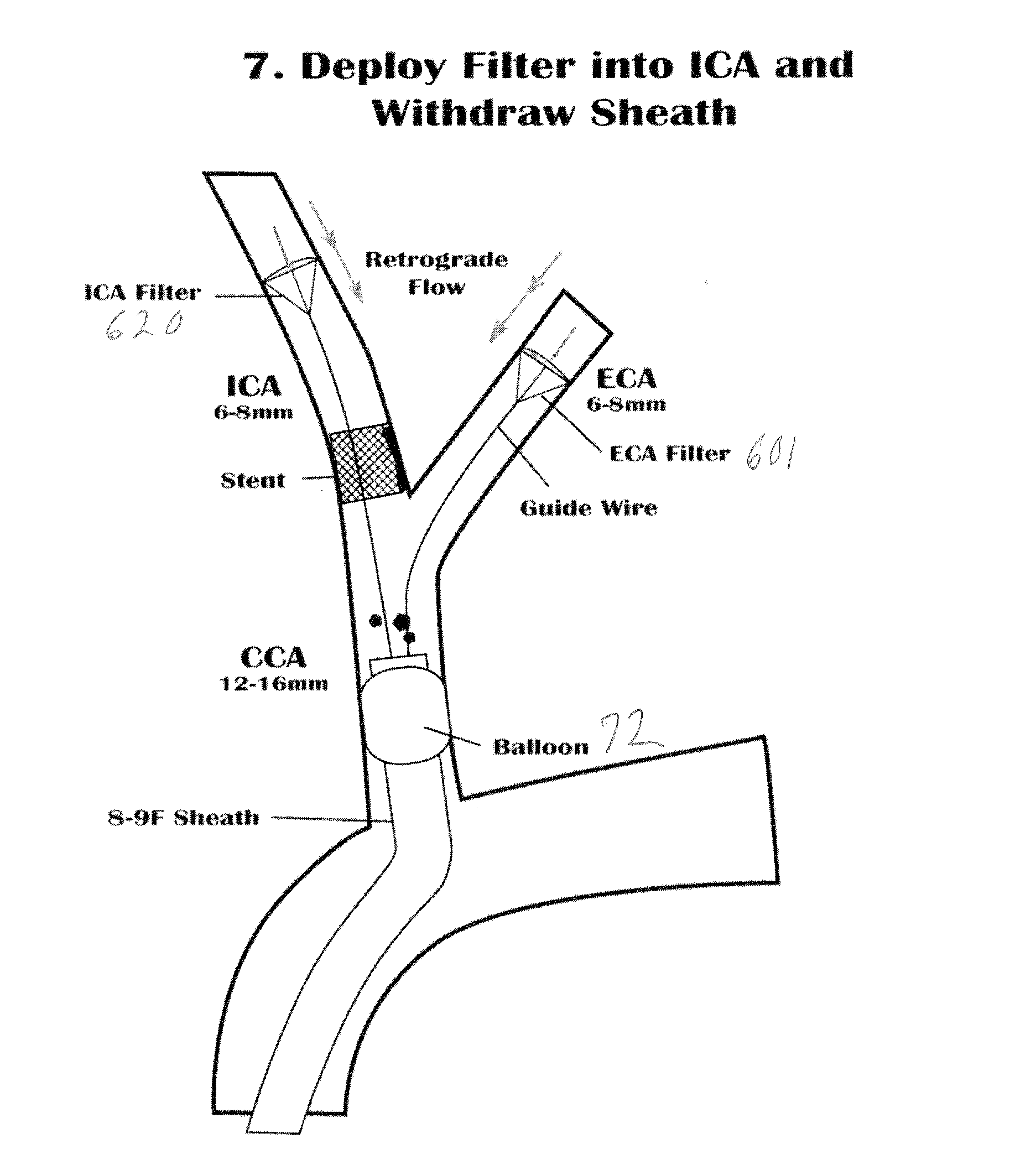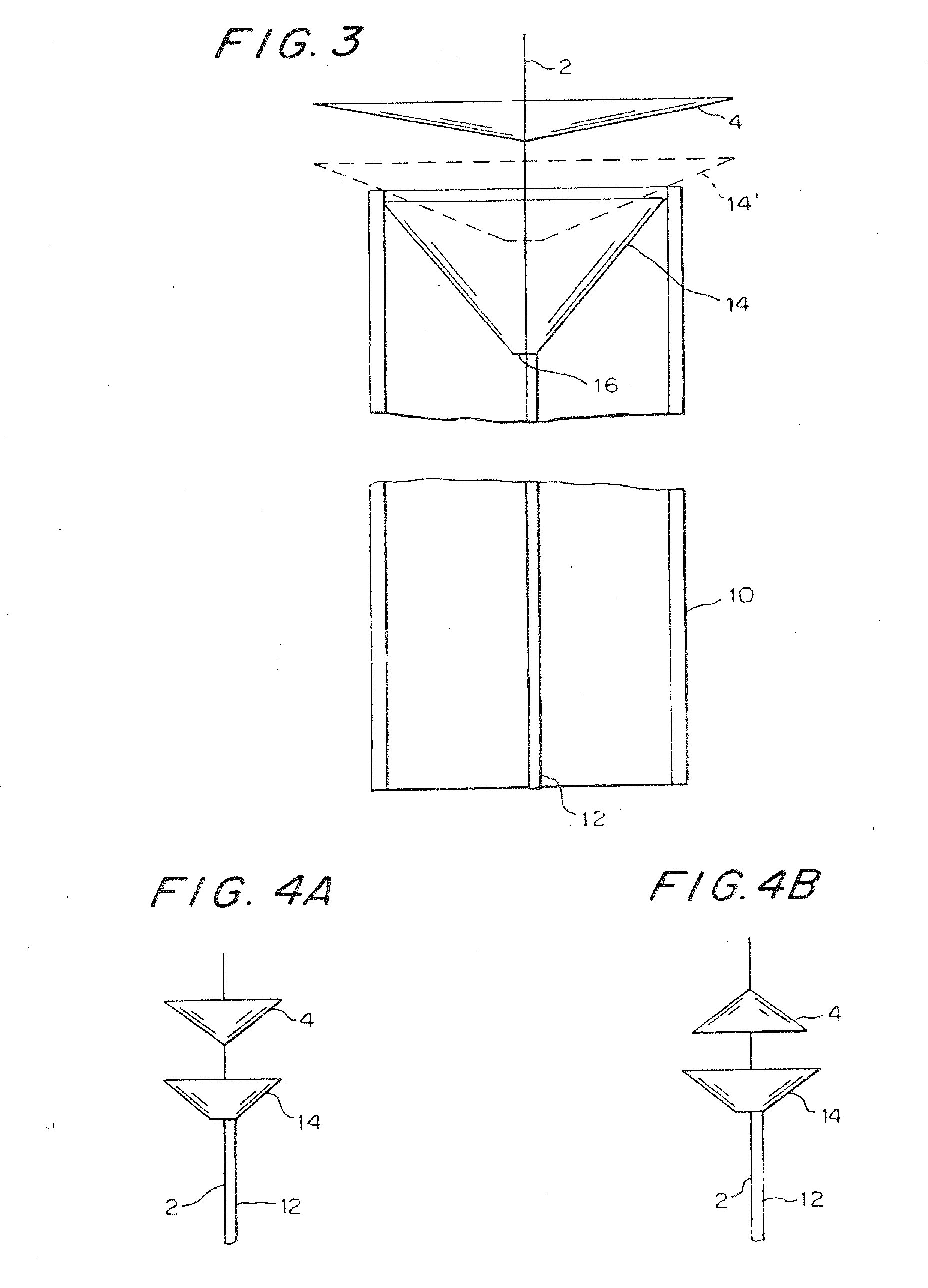Vascular filter with improved strength and flexibilty
a vascular filter and flexible technology, applied in the field of medical devices, can solve the problems of difficult use of tortuous arteries, filter holes that are not well-defined and constant, and membranes that could easily tear, etc., and achieve the effect of improving strength and flexibility
- Summary
- Abstract
- Description
- Claims
- Application Information
AI Technical Summary
Benefits of technology
Problems solved by technology
Method used
Image
Examples
Embodiment Construction
[0038]The advantages of the invention will become more apparent after reference to the following detailed description. FIGS. 28-39 show filters that can serve as distal filters in the two-filter systems shown in FIGS. 1-27. However, the manufacturing techniques described below can also be used in the manufacture of proximal filters.
[0039]In the present specification, filters with improved flexibility and smaller profile are described. Such a filter basically has a proximal frame for expansion and contraction and, attached thereto, a thin filter bag that is made of two basic materials. One material is the highly flexible filter membrane itself, with a pattern of holes for allowing flow of blood particles below a well defined size, and the other material is a reinforcement made of fine fibers with high axial strength but thin enough to be flexible upon bending. The reinforcement is integrated with the membrane to create a composite structure with very flexible membrane areas where the...
PUM
 Login to View More
Login to View More Abstract
Description
Claims
Application Information
 Login to View More
Login to View More - R&D
- Intellectual Property
- Life Sciences
- Materials
- Tech Scout
- Unparalleled Data Quality
- Higher Quality Content
- 60% Fewer Hallucinations
Browse by: Latest US Patents, China's latest patents, Technical Efficacy Thesaurus, Application Domain, Technology Topic, Popular Technical Reports.
© 2025 PatSnap. All rights reserved.Legal|Privacy policy|Modern Slavery Act Transparency Statement|Sitemap|About US| Contact US: help@patsnap.com



